What Does Going Green Mean?
What's the difference between green design, passive design and sustainable design ... and why is it important?
Janik Dalecki
8 July 2017
Houzz Australia Contributor. Multi award winning building designer with over 10 years of experience. Keen blogger and freelance writer, writing about all things design related.
Houzz Australia Contributor. Multi award winning building designer with over 10 years... More
Increasing greenhouse gases, global warming, climate change, diminishing fossil fuel stocks, rising energy prices and carbon tax….these are just a few of the global headlining topics that we hear about every day. Daily exposure to these issues has encouraged a rise in the conscious effort of smart designs that are considerate of future environmental impact. These smart designs take into consideration the already evident changes we are seeing in our world today, while also considering how we can lessen, or even stop, further damage to our environment for future generations to come.
The real function of the home is to provide shelter and refuge from climatic forces. However, as we are seeing our climate change around us, homes need to do much more than simply fulfil these needs. If future climate changes are taken into account during the design phase, not only will this reduce the damaging effects houses will have on the environment over their lifespan, but it will also ensure the comfort of the occupants living within for many years to come. Passive design, green design and sustainable design are all elements we’ve become used to hearing in light of this, but what do these words actually mean? Let’s take a look from the ground up.
Browse through pictures of sustainable homes
Browse through pictures of sustainable homes
Passive design
Passive design is an approach that takes advantage of the climate to maintain a comfortable temperature range within the home. This is achieved through the appropriate orientation of the house on its site to make the most of natural heating and cooling.
House orientation is the key component to passive design, with spatial zoning, thermal mass, ventilation, insulation, shading and glazing also being contributing factors. It is a relatively simple strategy, intended to keep summer heat out and winter heat in, moderating the temperature of the home for comfort all year round.
Passive design can be easily achieved with upfront thinking and planning during the design phase of a home build. The best bit is it’s free – this efficient design strategy relies solely on the sun and breezes to achieve thermal comfort within the home, with the added benefit of reducing the home’s operating energy costs over its lifespan.
Passive design is an approach that takes advantage of the climate to maintain a comfortable temperature range within the home. This is achieved through the appropriate orientation of the house on its site to make the most of natural heating and cooling.
House orientation is the key component to passive design, with spatial zoning, thermal mass, ventilation, insulation, shading and glazing also being contributing factors. It is a relatively simple strategy, intended to keep summer heat out and winter heat in, moderating the temperature of the home for comfort all year round.
Passive design can be easily achieved with upfront thinking and planning during the design phase of a home build. The best bit is it’s free – this efficient design strategy relies solely on the sun and breezes to achieve thermal comfort within the home, with the added benefit of reducing the home’s operating energy costs over its lifespan.
To make the most of passive solar design, you must be in tune with how to operate your home. Know when to open and close windows to let breeze in or keep them out, while also knowing when to open and close doors, blinds and windows to let sunlight in or keep it out.
Knowing how to correctly operate your home through the seasons can lessen your environmental impact and ensure your home is performing at its peak. A five-star home requires a five-star user in order for it to achieve its full operating potential.
Knowing how to correctly operate your home through the seasons can lessen your environmental impact and ensure your home is performing at its peak. A five-star home requires a five-star user in order for it to achieve its full operating potential.
Green design
This is an approach to design and building that minimises harm to both human health and the environment over the home’s lifespan.
This is an approach to design and building that minimises harm to both human health and the environment over the home’s lifespan.
Green design is achieved through the combination of material selections, the build of the structure itself and the sustainable environment. This involves specifying building materials and resources that have low embodied energy – the amount of energy consumed by their production – as well as minimal impact on both the environment and the home’s occupants.
Materials with low embodied energy should be paired with materials with lower volatile organic compounds (Low VOC) for optimum occupant health. Volatile organic compounds are harmful chemicals found in a number of home building materials. The toxins released by these materials can be harmful as they pollute the air of the home over the materials’ life.
Low VOC materials are becoming increasingly important with the rise in energy-efficient designs. In an energy-efficient design, a well-sealed building is ideal, therefore the toxins present in some building materials have no way of escaping from inside the home. Low VOC materials ensure these toxins do not enter the home in the first place.
Materials with low embodied energy should be paired with materials with lower volatile organic compounds (Low VOC) for optimum occupant health. Volatile organic compounds are harmful chemicals found in a number of home building materials. The toxins released by these materials can be harmful as they pollute the air of the home over the materials’ life.
Low VOC materials are becoming increasingly important with the rise in energy-efficient designs. In an energy-efficient design, a well-sealed building is ideal, therefore the toxins present in some building materials have no way of escaping from inside the home. Low VOC materials ensure these toxins do not enter the home in the first place.
Consideration should also be given to the use of renewable energy sources to power a home, such as wind and solar, along with energy-efficient appliances. The efficient use of water through water harvesting, wise internal and external water use, and water recycling measures should also be considered.
Learn everything about solar panels
Learn everything about solar panels
Sustainable design
To get an understanding of sustainable design, let’s first look at the definition of sustainability. Sustainability is the practice of not being harmful to the environment or depleting natural resources, thereby supporting long-term ecological balance.
Sustainability is about taking what we need to live now, without negatively affecting the requirements of future generations. If an activity is said to be sustainable, it should be able to continue forever.
When we talk about sustainable home design, we refer to homes that are designed to reduce the overall environmental impact both during the home’s construction and over its entire lifespan. The home should be designed and constructed in a way that meets the needs of the present generation, without compromising the ability to meet future generations’ needs.
To get an understanding of sustainable design, let’s first look at the definition of sustainability. Sustainability is the practice of not being harmful to the environment or depleting natural resources, thereby supporting long-term ecological balance.
Sustainability is about taking what we need to live now, without negatively affecting the requirements of future generations. If an activity is said to be sustainable, it should be able to continue forever.
When we talk about sustainable home design, we refer to homes that are designed to reduce the overall environmental impact both during the home’s construction and over its entire lifespan. The home should be designed and constructed in a way that meets the needs of the present generation, without compromising the ability to meet future generations’ needs.
A great way to explain the difference between sustainable and green design, which are closely-related design principles, is through the building product, timber. Timber can be a very green product, but it’s only a sustainable product if the wood is harvested from a forest with a sustainable forest plan, which ensures the forest isn’t depleted over time to eventually result in nothing.
Why is it so important?
Knowing that you are doing your part to create a sustainable future should be enough of a motivating factor to implement these design principles. However, a more evident payoff is the immediate savings you will see in the cost of running your home.
Many homes we are living in now that were built in the last 50 – or even five – years did not take into account our climate and environment. Up front, these homes required large amounts of energy and resources to initially be built. On top of this, the energy used to run these homes is huge and often wastes energy; working against the climate and putting further unnecessary strain on our environment.
Basic passive design principles can be easily incorporated into your home design for no extra cost, and can reduce – or even eliminate – the need for auxiliary heating or cooling.
See how recycled materials and local dirt helped design this eco-friendly home
Knowing that you are doing your part to create a sustainable future should be enough of a motivating factor to implement these design principles. However, a more evident payoff is the immediate savings you will see in the cost of running your home.
Many homes we are living in now that were built in the last 50 – or even five – years did not take into account our climate and environment. Up front, these homes required large amounts of energy and resources to initially be built. On top of this, the energy used to run these homes is huge and often wastes energy; working against the climate and putting further unnecessary strain on our environment.
Basic passive design principles can be easily incorporated into your home design for no extra cost, and can reduce – or even eliminate – the need for auxiliary heating or cooling.
See how recycled materials and local dirt helped design this eco-friendly home
With population growth on the rise, we have seen an increase in urban infill of existing developed areas. The less impact we can have on these pre-existing infrastructures, the more viable our population growth with minimal environmental effect is.
The new generation of homes we are building today will still be in use in 50 years time. A conscious effort needs to be made to implement these ‘environmentally friendly’ strategies in order to reduce the strain on the environment that population growth is causing. Without these small changes to the way we approach design, we will see further negative effects on our environment, possibly with irreversible consequences.
It is important to remember that we are not reinventing the wheel. These design principles have been around for many years and can be incorporated into your home design for little or no additional cost. There really is no excuse for not considering the environment in relation to your home – and the generations to come will thank you for it!
Read more:
Houzz Tour: Earthy Materials Define This Bangalore Bungalow
Tell us:
Have you used environment-friendly practices in the building, renovation or running of your how? Tell us all about them in the Comments below.
The new generation of homes we are building today will still be in use in 50 years time. A conscious effort needs to be made to implement these ‘environmentally friendly’ strategies in order to reduce the strain on the environment that population growth is causing. Without these small changes to the way we approach design, we will see further negative effects on our environment, possibly with irreversible consequences.
It is important to remember that we are not reinventing the wheel. These design principles have been around for many years and can be incorporated into your home design for little or no additional cost. There really is no excuse for not considering the environment in relation to your home – and the generations to come will thank you for it!
Read more:
Houzz Tour: Earthy Materials Define This Bangalore Bungalow
Tell us:
Have you used environment-friendly practices in the building, renovation or running of your how? Tell us all about them in the Comments below.
Related Stories
Working with professionals
How to Find an Architect That's Right for You
Make the construction and renovation of your home a pleasant and memorable journey by selecting the right architect
Full Story
Indian Homes
11 Indian Homes That Revolve Around Courtyards
Take inspiration from these homes that make a solid case for courtyards in urban life
Full Story
Decorating Guides
Building Secrets to a Cool, Breezy Home for Hot Indian Summers
Get updated on climate-responsive design strategies for a home that stays naturally cool all year round
Full Story
Working with professionals
What's the Difference Between an Architect and a Civil Engineer?
We clear up the confusion between the professional roles and scope of work of an architect and a civil engineer
Full Story
Architecture
These Indian Homes Know How To Combat Harsh Climate
See how these homes by SPASM, Kumar Moorthy & Associates and JPLUSDARCHITECTS mitigate the ramifications of harsh climate ahead of time
Full Story
Decorating Guides
What Are the Biggest Challenges in Renovating an Old House?
Here are some common problems which may arise during the renovation of an old property
Full Story
Indian Homes
How to Beat the Summer Heat by Keeping the Roof Cool
Here are ways to cope with the high summer temperatures that heat the roof and the top floors of residential buildings
Full Story
Decorating Guides
How to Design a Home That is Not a Burden on the Environment
Incorporate smart details with simple lifestyle changes to create a home that is kind to the planet
Full Story
Architecture
What Is Kerala Architecture?
Let's explore what design elements constitute traditional Kerala house architecture
Full Story
Architecture
Expert Speak: What Are the Best Materials for Home Elevations?
Houzz checks in with an expert about the the most sturdy and adaptable materials for home facades
Full Story

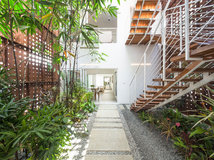
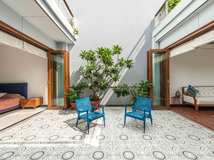
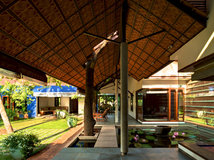

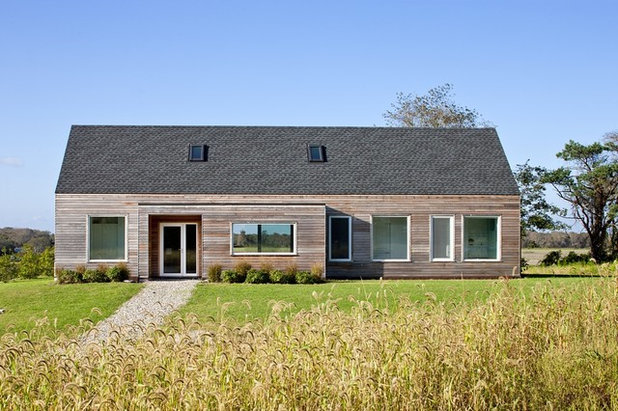
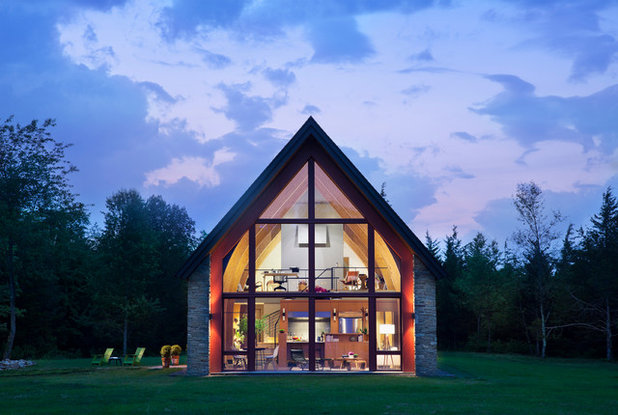
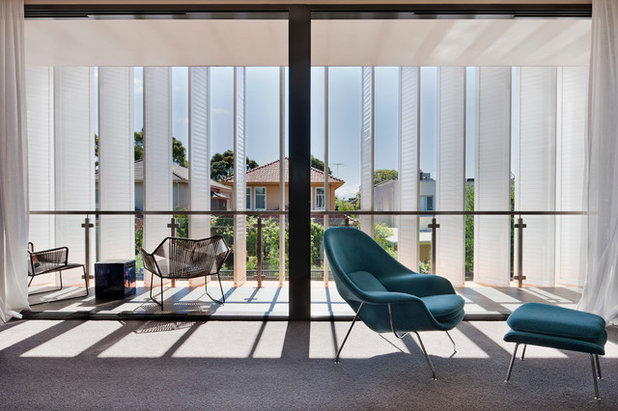
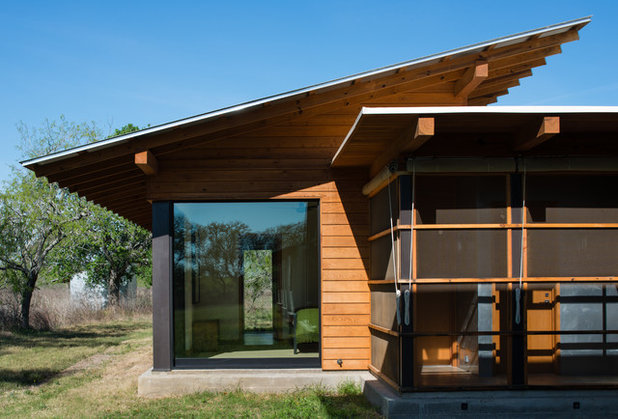
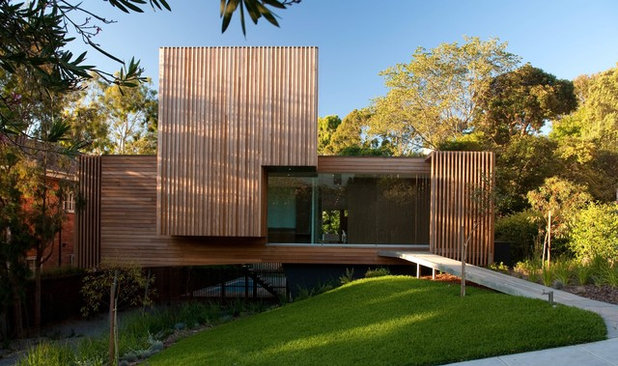
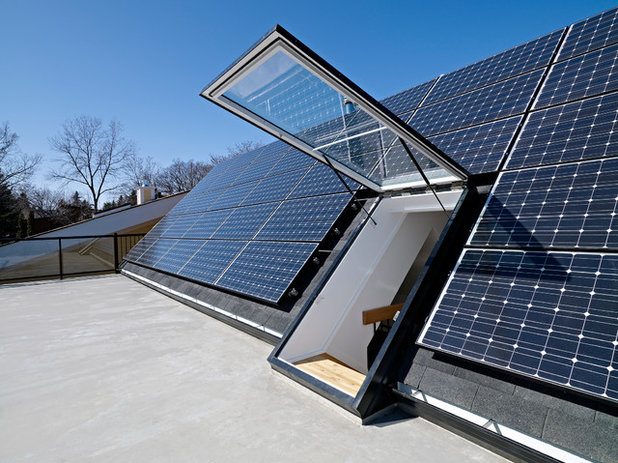
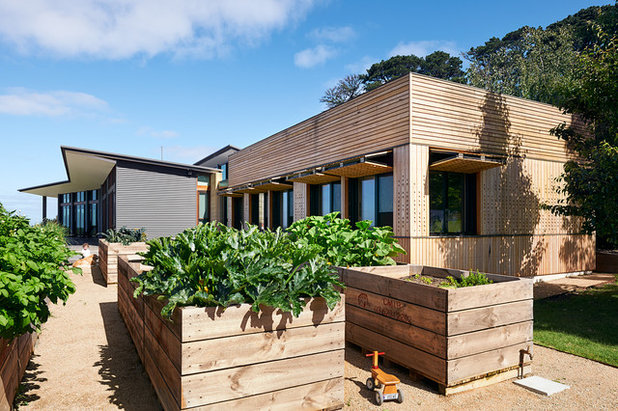
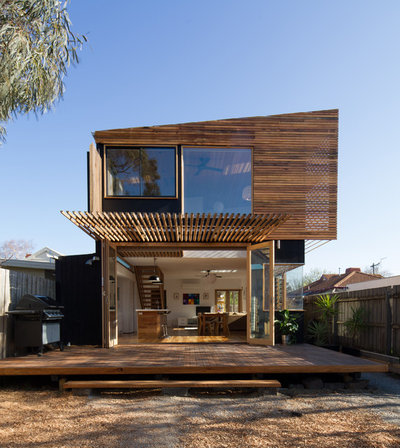
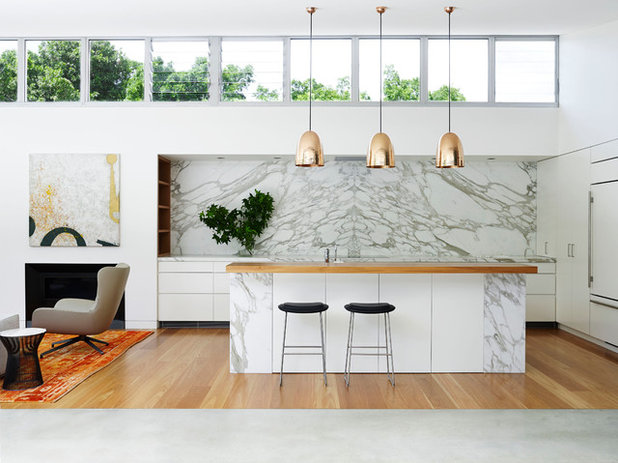
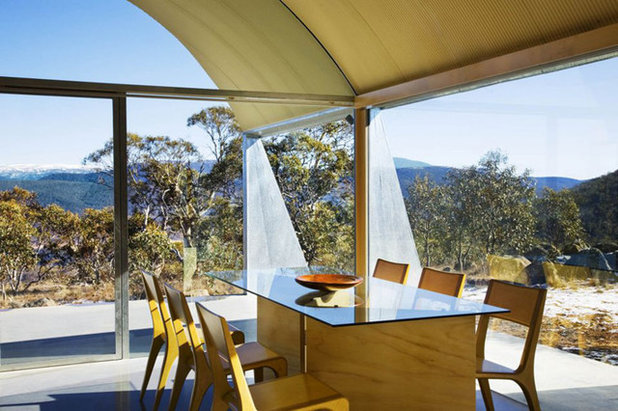
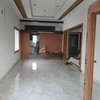
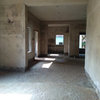
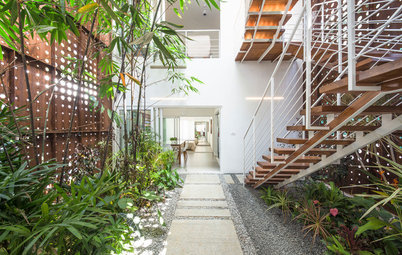
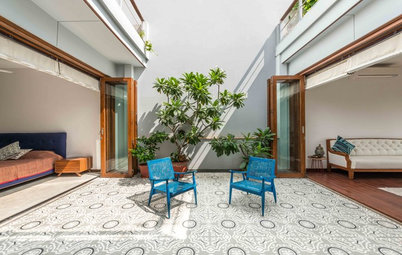
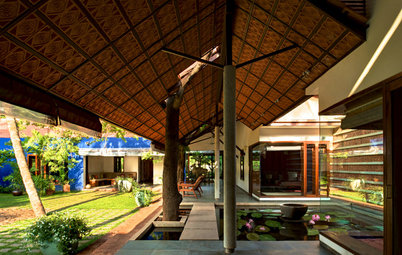
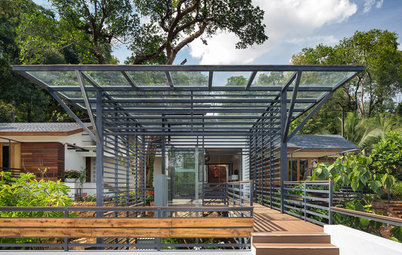
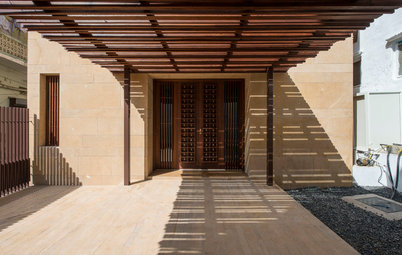
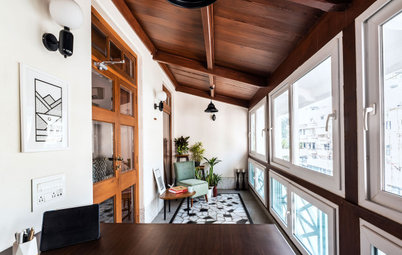
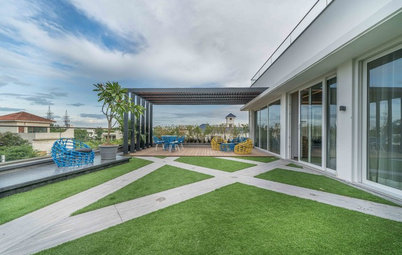
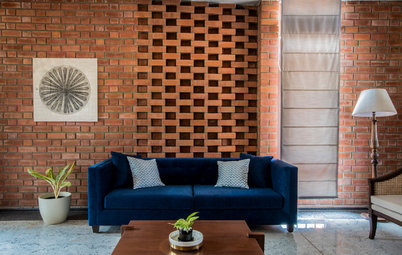
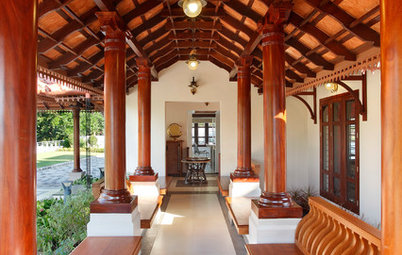
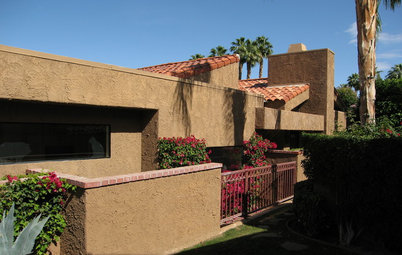
Hi @petrucci0, It sounds like you have made some great improvements to lower your energy usage and prevent any heat loss, but from what you have said though it sounds like you are using a lot of energy to heat your house. One part is obviously stopping any heat loss which it sounds like you have taken care of, but another part is naturally heating your home from the suns energy. The only way to overcome your high heating energy usage is is through letting that winter sun into the house and allowing it to be absorbed into thermal mass within the house so you can eliminate your auxiliary heating. If you are looking at making any further modifications to your house I would recommend talking to a local expert. Hopefully I have been of some help.
Thànk you for your help and advice. It is good to know that we have done the right things even though we haven't achieved a better result.
I have just finished building a new house in a seaside suburb of Melbourne, we have a Mediterranean climate due to ur proximity to Port Philip bay. The effect of this climate is that we don't get the high variation of temperature that they do only 10-15 kms from the coast. Less frosts and sea breezes in summer, also diurnal-nocturnal temperature changes are buffered by the bay acting as a heat bank in winter and a sea breeze generator in summer. we used this information and the aspect of the building site to take full advantage of the passive design opportunities they offered. we oriented the house along an east-west running block to maximise northern exposure for winter sun to heat the polished concrete. We added shade battens that cover windows in summer and open to invite winter sun in. we used deep eaves and cantilevered porches to shade high angle summer sun and let in low angle winter sun. double glazing, extra insulation, efficient heating and cooling equipment than is only required in extremes of summer and winter. grey water flushing system from rainwater tanks, solar panes and batteries that make us 90% energy self sufficient in late winter into spring so far. all this cost a bit more but we are enjoying the outcome. Anything you can do to improve sustainability is worth while as the total of all efforts is what will make the difference.